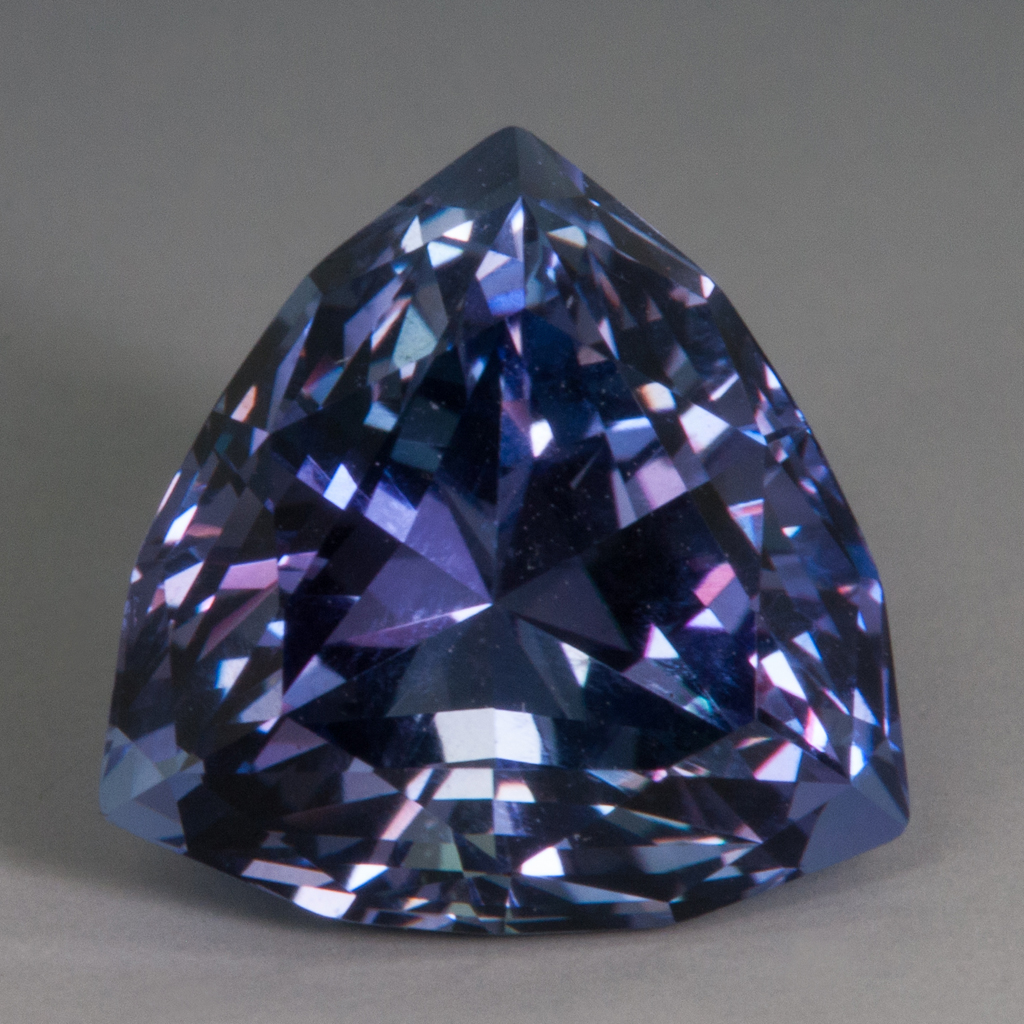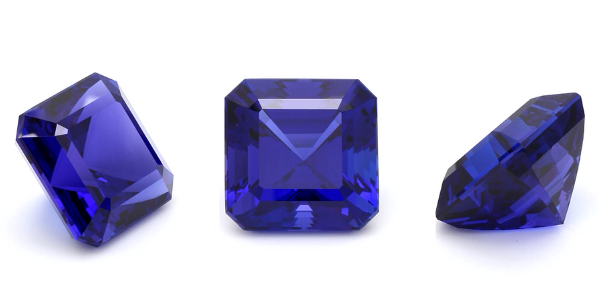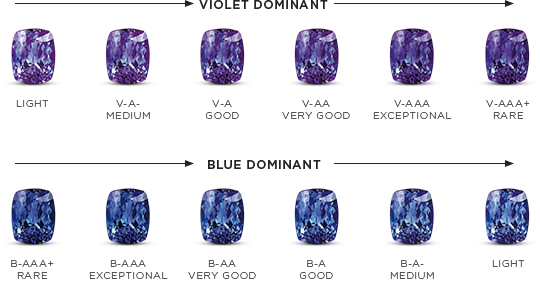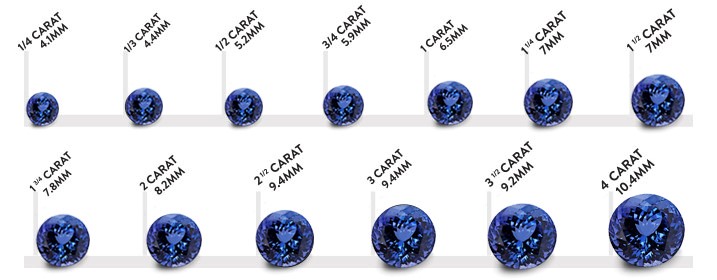FORMATION & CHARACTERISTIC
Five hundred and eighty-five million (585,000,000) years ago, in the foothills of Mount Kilimanjaro, Mother Nature yielded her most precious of all gems. As testimony to its rarity it remained unknown until 1967 when it was discovered at what is the still the world’s only known source – Tanzania.
READ MOREFORMATION & CHARACTERISTIC
Five hundred and eighty-five million (585,000,000) years ago, in the foothills of Mount Kilimanjaro, Mother Nature yielded her most precious of all gems. As testimony to its rarity it remained unknown until 1967 when it was discovered at what is the still the world’s only known source – Tanzania.
Significant tectonic plate activity and intense heat formed Mount Kilimanjaro, and in this process, the Mozambique Orogenic Belt (one of the most mineral-rich places on Earth), was formed as well. It is believed that it was during this process that rough tanzanite was formed. The process is known as regional metamorphism, and can be explained as follows: when tectonic plates collide with one another, the igneous rocks (rocks formed through the cooling and solidification of magma / lava) of each tectonic plate are morphed into one another by means of extreme pressure. The rocks reach near melting-point, and when this happens, they produce beautiful crystal structures. In this process, gems are formed, essentially, from the coming together of two plates. Each of the two plates can contain a variety of different minerals, and because of this, combinations that are specific to one area, may occur. This explains why tanzanite is only found in one area in the world. The morphing together of two tectonic plates in this specific area of Tanzania resulted in a particular mix that has not been discovered anywhere else in the world.
The conditions that created the tanzanite deposit at the foothills of Mount Kilimanjaro are thought to be so unique, that geologists believe the chances of another batch of tanzanite being created are only about one in one million.

FEATURES OF TANZANITE
Rarity: Tanzanite’s only known source in the world is a 4km strip of land near Mount Kilimanjaro, northern Tanzania. This single, limited source renders tanzanite at least a thousand times more than diamonds. With only one known source to date, it is predicted that within the next 10 – 12 years no more gem-quality tanzanite will be found.
Colour: Tanzanite is uniquely trichroic. This means that in its rough form, it radiates three different colours from each of its crystallographic axes: blue, violet and burgundy. Once cut and polished, tanzanite ranges from electric violets to vibrant blues, deep royals and rich indigos. The color of Tanzanite is strongly related to the presence of vanadium and titanium in its crystallographic structure.
Uniqueness: Its geology is so unique that the chances of tanzanite occurring elsewhere in the world are unlikely. Tanzanite is an exclusively African heritage and the alluring narrative of its discovery have proved to be a unique selling feature.
Investment value: There is no other investment that will yield as great a return as investing in tanzanite of the highest quality. It is more likely to increase in value as supply gets less and demand increases.
HISTORY & ORIGIN
Tanzanite’s only known source in the world is a 4km strip of land near Mount Kilimanjaro, northern Tanzania. This single, limited source renders tanzanite at least a thousand times more than diamonds. With only one known source to date, it is predicted that within the next 10 – 12 years no more gem-quality tanzanite will be found. Its geology is so unique that the chances of tanzanite occurring elsewhere in the world are highly unlikely. Because of this scarcity, tanzanite jewellery is extremely sought-after and valuable.
READ MOREHISTORY

Tanzanite’s only known source in the world is a 4km strip of land near Mount Kilimanjaro, northern Tanzania. This single, limited source renders tanzanite at least a thousand times more than diamonds. With only one known source to date, it is predicted that within the next 10 – 12 years no more gem-quality tanzanite will be found. Its geology is so unique that the chances of tanzanite occurring elsewhere in the world are highly unlikely. Because of this scarcity, tanzanite jewellery is extremely sought-after and valuable.
Tanzanite was brought into the commercial market place by Manuel D’Souza, a tailor by profession and prospector by passion, who incorrectly identified it as a sapphire. In years to follow, Tanzanite found its way to the GIA (Gemological Institute of America) in New York, who analysed the gem and identified it as a variety of the mineral zoisite.
Though there are various accounts of how tanzanite was first discovered in Tanzania, the most credible, and widely accepted story, started with an Arusha tailor named Manual d’Souza. On July 7th 1967, d’Souza discovered a cluster of transparent blue stones laying on the ground near the foothills of Mount Kilimanjaro, which he immediately mistook for sapphires. He presented them to an acquaintance, who suggested they have the stones tested for hardness, in order to identify their compounds. The test ruled out the possibility of sapphires, as the stones were much softer than a typical sapphire. They were then misidentified as peridot, and later as dumortierite. The gems appeared to be something entirely new, unknown to the gemological world.
The gems discovered by d’Souza were sent off to the GIA (Gemological Institute of America), where expert gemologists identified them as a variant of the stone zoisite. At around the same time, the correct identification of de Souza’s discovery was made by Ian McCloud, a Tanzanian government geologist in Dodoma, with later confirmations from Harvard, the British Museum, and University of Heidelberg.
Tanzanite first became popular commercially when Henry Platt, the great grandson of Louis Comfort Tiffany, founder of the American jewellery manufacturer Tiffany & Co, fell in love with the gem. He became so excited at the prospect of selling it, that he immediately set about creating a marketing campaign around it, and he was adamant to be the first to bring tanzanite to the jewellery market on a grand scale. It was Platt who named the gem “tanzanite,” after its country of origin, Tanzania. Platt famously called tanzanite “the most important gemstone discovery in over 2000 years.” Seemingly overnight, tanzanite became the most coveted and popular gemstone in the world.
Today, tanzanite rings and other tanzanite jewellery creations are a popular choice not only for investment, but also to wear – the stones offer a unique beauty unachievable by other gems.
THE FUTURE
Tanzanite is a relatively “new” gem when compared other precious stones such as diamonds. Tanzanite was first discovered in Tanzania in 1967, and up until its discovery, it was completely unknown to man.
READ MORETHE FUTURE
Tanzanite is a relatively “new” gem when compared other precious stones such as diamonds. Tanzanite was first discovered in Tanzania in 1967, and up until its discovery, it was completely unknown to man.
Tanzanite is coveted all across the world, not only because of its beauty, but also because of its rarity. It so popular, in fact, that it among the top ten best-selling gems in the world.
Experts believe that within the next 10 to 12 years, the supply of tanzanite will decrease, and eventually, Tanzania’s supply of tanzanite will run out, and the magnificent gem will become depleted. However, as supplies begin to run low, mining companies are going deeper underground in the hope of recovering more tanzanite in layers previously unexplored.
Tanzanite already appreciates in value every year, but once supplies begin to run low, the gem is expected to significantly increase in value. Experts believe that once the supply of tanzanite is exhausted, it will reach an all-time high value, and prices of the gem are expected to rise dramatically. Like in all industries, prices are affected by supply and demand. The demand for tanzanite continues to rise, but the supply is slowly decreasing. Once tanzanite is depleted, there will be no more first time owners of this precious gem, and buyers hoping to acquire their very own tanzanite stone or tanzanite jewellery creation will have to be willing to spend a bit more than they currently would. As a result, tanzanite rings, earrings, necklaces and bracelets are expected to become precious family heirlooms (although in many cases one can say that they already are!).

GRADING 4C’S
Tanzanite is unique among gemstones, but like diamonds and other precious gems, it is graded by means of a standard grading system. This grading system is vital in determining the value of each individual tanzanite, but it is also important for a consumer’s peace of mind. Each tanzanite jewellery creation is accompanied by a Certificate of Authenticity, which lists the stone’s characteristics together with an Ethical Compliance Certificate confirming that the Tanzanite was mined in an ethical manner.
READ MOREGRADING 4C’s
Tanzanite is unique among gemstones, but like diamonds and other precious gems, it is graded by means of a standard grading system. This grading system is vital in determining the value of each individual tanzanite, but it is also important for a consumer’s peace of mind. Each tanzanite jewellery creation is accompanied by a Certificate of Authenticity, which lists the stone’s characteristics together with an Ethical Compliance Certificate confirming that the Tanzanite was mined in an ethical manner.
CUT
It is extremely important for a tanzanite gemstone to be expertly cut, as the cut impacts not only the brilliance and fire of your stone, but also the overall quality. A fine cut tanzanite will typically yield up to 30% premium over stones cut with weight maximization techniques. Cut is thus a very important factor to consider when purchasing tanzanite.
The cut of the gemstone goes beyond its shape (for example a round, oval or pear shape stone). It refers to the brilliance yielded by the facets cut into the stone. It takes a cutter several years to perfect the technique of cutting tanzanite: tanzanite is softer than diamonds, which means that it’s more easily damaged during the cutting process, and thus requires extra care and precautions.
An excellent cut ensures that the stone’s facets reflect light to create maximum brilliance and scintillation. To create an excellent cut, the angles on the table of the stone, and the angles of the pavilion of the stone must be perfectly proportioned and calibrated. When wearing your tanzanite ring or tanzanite necklace, you should notice a “bouncing” of light, or sparkling, with your movements. The more the gemstone sparkles, the better it has been cut. If tanzanite is cut too deep or too shallow, the radiance will deflect through the sides of the stone, thus limiting its brilliance. Depth percentage is calculated by dividing the depth of the stone by the stone’s girdle diameter. The ideal range is 60% to 80%.

COLOUR
Tanzanite has what many would consider the finest blue hue in the world of gemstones. Tanzanite is one of the only trichroic gemstones known to man, meaning it has the ability to display shades of blue, violet and red.
Good quality tanzanite has a deep royal blue or violet colour. Colours range from rich royal blues or vibrant violet to paler shades. The colour dominance depends on whether the gem is cut and polished from the long or the short axis of the crystal shaped rough tanzanite; and the more intense the colour the better the quality.
The depth of colour, or tone, in a tanzanite gemstone refers to the stone’s lightness or darkness and ranges from Intense (AAA+) to Faint (A). The saturation of the stone’s hue is often considered the most important factor when grading tanzanite. Saturation refers to the level to which colour “fills” the stone.
The deeper the colour, the more valuable the gemstone, and has been established that consumers naturally gravitate towards gemstones of deeper colours. Tanzanite gemstones of intense colour are more valuable because they occur much more rarely in nature. The finest tanzanite colours in the world make up only 1% of the world’s tanzanite production. Larger tanzanite gemstones are usually deeper in colour, and it is unusual to find an intensely deep tanzanite that weighs less than 5 carats.
Tanzanite is usually either blue-dominant, or violet-dominant. Though personal preference should be considered before making a tanzanite purchase, it is generally accepted that blue-dominant tanzanite is a better option from an investment point of view, as it is more rare and likely to yield a higher return.

CLARITY
The clarity of a Tanzanite is graded in a similar manner to that of diamonds, and range between Internally Flawless (IF), and Included. Clarity measures the incidence of natural inclusions found in a tanzanite stone.
- IF – Internally Flawless (no inclusions are present when magnified up to 10x)
- VVS – Very Very Slight Inclusions (inclusions resembling tiny specs are visible when the stone is magnified 10x)
- VS – Very Slight Inclusions (inclusions slightly more pronounced than those graded Very Very Slightly Included are present)
- SI – Slightly Included (inclusions are visible through the crown of the gemstone)
- I – Included (inclusions are visible to the untrained eye)

CARAT
Carat refers to the weight of a tanzanite and other gemstones. A carat is a unit of measurement equal to 0.2grams (200 milligrams). Large tanzanite (over 3 carats) is rarely found in nature, so they are more valuable than smaller tanzanite.

CERTIFICATION
A rare and beautiful creation from Africa, each unique tanzanite comes with a certificate of authentication. The certificate not only assures that the gemstone has been ethically sourced from the foothills of Kilimanjaro, but it also explains the cut, colour, clarity and carat weight of the tanzanite. The certification of each tanzanite is extremely important as it describes the unique characteristics of the gemstone, while establishing the authenticity.
READ MORECERTIFICATION
A rare and beautiful creation from Africa, each unique tanzanite comes with a certificate of authentication. The certificate not only assures that the gemstone has been ethically sourced from the foothills of Kilimanjaro, but it also explains the cut, colour, clarity and carat weight of the tanzanite. The certification of each tanzanite is extremely important as it describes the unique characteristics of the gemstone, while establishing the authenticity.
The key elements of a Tanzanite Certificate:
THE NUMBER OF THE TANZANITE
When you purchase your one-of-a-kind tanzanite it will be accompanied by a number, which guarantees the authenticity of the gemstone. The number can be used to track down the origin of the tanzanite and ensure that the gemstone was sourced ethically from the foothills of Kilimanjaro. By using the number on the gemstone you will be able to view the entire background of the tanzanite.
THE WEIGHT OF THE TANZANITE – CARAT
Like a diamond and other gemstones a tanzanite’s weight is measured in the form of carats. This means that one carat tanzanite will weight approximately 200mg or rather a fifth of the gram. The higher the amount of carat weight, the more valuable and rare the tanzanite; a tanzanite larger than five carats is considered to be extremely valuable and rare.
THE SHAPE OF THE TANZANITE
When you speak of the shape of the tanzanite, you’re referring to the shape or form into which the tanzanite is transformed. A perfect example of the shape of a tanzanite is oval, round and cushion – some of these well-known shapes are more popular than other when it comes to tanzanite jewellery. In the end, it all depends on the personal preference of the person who wear it.
THE UNIQUE DIMENSIONS OF THE TANZANITE
The size of a tanzanite is measured in millimetres and added to the certificate of authentication. The dimensions establish the length, width and height of the tanzanite. By having a look at the dimensions you would be able to estimate the size of the tanzanite.
THE CUT OF THE TANZANITE
To determine the amount of facets that was cut and polished by a skillful craftsman, you will refer to the cut section on the certificate. This part of the tanzanite grading is established by handwork and not nature. The cut will be able to tell you how much light enters the table of the tanzanite and how much light leaves the gemstone. It’s therefore important that the cut of the tanzanite is done by a master cutter with years of experience. Like a diamond, a tanzanite is available in a variety of different cuts that bring out the brilliance of the gemstone.
THE COLOUR OF THE TANZANITE
One of the most spectacular characteristics of a tanzanite is the exquisite colour of the gemstone. A tanzanite is available in a wide selection of blue and purple hues; from a light lavender colour to dark blue, a tanzanite is truly mesmerising. The deeper and more intense the blue colour of a tanzanite, the rarer and more valuable the gemstone. To determine the value of a tanzanite, the grading process starts at a violet colour and ends at a higher value blue colour.
THE CLARITY OF THE TANZANITE
A tanzanite diamond has internal inclusions called, “flaws” or blemishes that have an impact on the grading value of the gemstone. The value of the tanzanite depends on the amount of inclusion in the gemstone; the higher the amount of inclusion the less valuable the tanzanite. A tanzanite is graded from Internally Flawless to Included.
